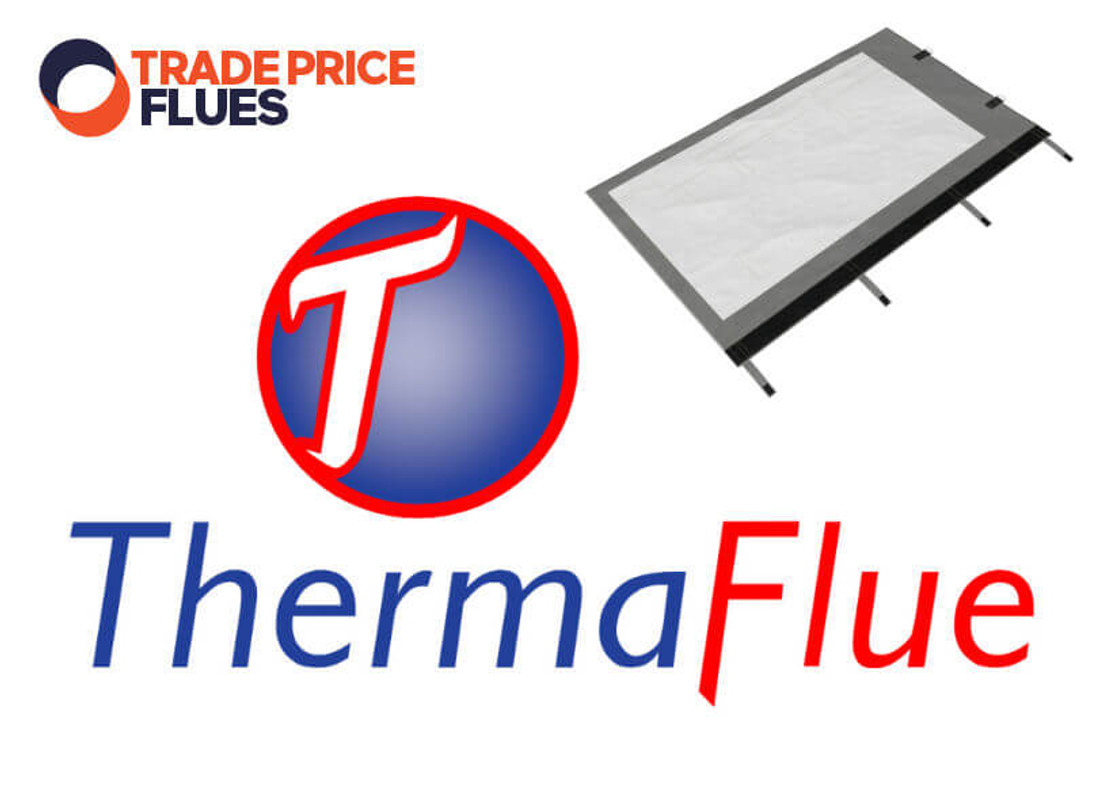Do I Need to Insulate My Chimney Liner?
If you are looking at installing a stove - or perhaps already have one - you’ll probably come across a lot of choices along the way. One of them may be whether you should insulate your chimney.
When it comes to your flue, some things are a legal requirement, while others simply come down to preference or your budget.
So, where does chimney insulation come into it? Is it a legal requirement? And how can it be done? In this guide, we explain all...
Can You Put Insulation Around a Chimney Liner?
Yes! Insulating a stainless steel chimney liner is not only possible but is highly recommended in many cases. However, you can’t just use any insulation material to do so. As your flue liner will reach a very high temperature when in use, it’s vital you use a suitably heat-resistant and non-flammable insulating material.
There can be many benefits to putting insulation around a chimney liner, including an improvement in stove performance and reduction in heat loss.
How Does Chimney Liner Insulation Work?
Chimney liner insulation works by keeping the inside of your flue warm. When you burn fuel in your stove, the fire relies on a good draw or draft to allow it to burn efficiently.
When the inside of your chimney is nice and warm, the smoke and fumes can rise up through your flue as they are supposed to. If your chimney is too cold, though, they might struggle to do this - meaning smoke backs out into the room or your fire will simply go out.
So, Do You Need to Insulate Your Chimney?
There are many benefits to insulating your chimney in certain circumstances, but there is no legal requirement to do so.
However, if you are experiencing issues with your chimney draw, insulating the liner might be necessary to ensure it is working as safely as possible.
Why is this?
If the fumes from your fire can’t rise all the way to the top of your chimney, the smoke will condense onto the walls of your flue liner. This can cause harmful corrosion and creosote build-up that, overtime, can result in a blockage, cracks and even chimney fires.
Why Would You Insulate Your Chimney Liner?
Some chimneys work fine without any insulation, while others can benefit hugely from it.
So, what are the reasons why you would choose to insulate your chimney liner?
Your Chimney is on an Exposed Wall
This is one of the most common reasons why chimney insulation is used. If your chimney is located on an external wall, it won’t benefit from the warmth produced by the rest of the building. So, particularly on especially cold days, smoke might struggle to rise without the use of chimney insulation to help it retain some heat.
Your Chimney Diametre is Too Big
Another main reason why many people benefit from chimney insulation is if your chimney diameter is significantly larger than your flue liner. This is often the case if you have converted a large open fireplace to accommodate a smaller, more efficient stove.
The extra room surrounding the liner can cause the temperature of the flue to drop. Adding insulation helps it keep a more efficient temperature.
Your Chimney Stack is Too Tall
In some cases, you might find that your chimney stack is actually too tall to be able to maintain its temperature all the way to the top - especially if it also experiences the previous two issues, as well!
Basically, if your chimney is suffering draft problems as a result of cold temperatures, insulating it could help.
How Do You Insulate a Chimney Liner?
There are a couple of different ways in which you can insulate a chimney liner.
You can either:
- Use a flue liner wrap or blanket
- Pour Vermiculite or other insulting filling into the chimney cavity
Today, most installers prefer to use wraps over poured insulation methods. This is because Vermiculite can absorb and retain moisture - so, if you develop a leak or water finds its way into your chimney cavity, it can lead to a bigger damp problem.
Here at Trade Price Flues, we recommend using our ThermaFlue Insulation Sleeves.
Made from mats of glass fibre and coated with a waterproof silicone layer, ThermaFlue can easily be installed by simply being wrapped around the flue liner and clipped into place. More cost effective than Vermiculite and approved by HETAS, ThermaFlue provides all the benefits of chimney insulation such as:
- Improving the performance of the flue
- Improving the efficiency of the stove
- Reducing condensation
- Reducing creosote build-up
- Improving the ‘eco-friendliness’ of the stove (a warmer liner means cleaner combustion)
Along with this, using a ThermaFlue wrap makes future chimney re-linings much easier than if using Vermiculite, as the removal process is clean and easy.
To install ThermaFlue chimney insulation, all you need to do is follow these simple steps...
1. Place your ThermaFlue sleeves on a flat surface insulation side facing up

2. Connect them together by linking the ‘G’ rings with the ‘D’ rings

3. Unwrap your flue liner and place the required length along the ThermaFlue sleeves

4. Wrap the ThermaFlue sleeves around the flue liner and place the straps into the buckles. Tighten the straps on each sleeve before proceeding to the next one

5. Make sure all straps are secured tightly and all ‘G’ and ‘D’ rings are connected together

Once the ThermaFlue insulation is complete, the flue liner can be placed into the chimney.
Do you need any help on finding chimney insulation for your flue liner? You can contact Trade Price Flues any time to get some expert advice!
Shop our full range of chimney and flue products online today at Trade Price Flues
We have more advice over on our blog…
How Do You Fit a Chimney Liner? | Does My Chimney Need a Liner? | Do You Need a Cowl on Your Chimney?
Latest Articles
-
Air Pollution Down in the UK Despite Record Wood Burner Sales
Great news! Wood-burning stoves, once considered environmental villains, have transformed into eco-f …18th Apr 2024 -
A Guide to Stove Installation in Lodges, Sheds, and Shepherd’s Huts
Shepherd’s huts, lodges, and sheds have become increasingly popular as charming retreats or alternat …25th Mar 2024 -
Pinned vs. Pinless Moisture Meters: Which is Best for Firewood?
When you collect or buy firewood, it usually starts very moist inside. Using sopping wet wood to bur …4th Mar 2024






